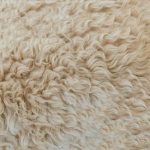When you're choosing between microfleece and polar fleece, you might notice more than just their feel; the differences can significantly impact your comfort and functionality. Microfleece, with its lightweight and moisture-wicking properties, suits active scenarios, whereas polar fleece provides a thicker layer for those chillier days. But how do these variations in composition and thermal insulation affect their best uses? Understanding these distinctions can help you make the right decision for your wardrobe, especially as the seasons change.
Table of Contents
Composition of Microfleece
Microfleece, made primarily from polyester, is designed to be lightweight, soft, and moisture-wicking, making it perfect for a variety of outdoor activities. Its unique structure consists of very fine fibers, contributing to its silky feel and excellent insulation properties.
Unlike traditional fleece, microfleece has a tighter weave, which limits bulk while maximizing warmth.
As you compare different fabrics, you'll notice that microfleece is often produced in multiple thicknesses, allowing you to choose the best option for your needs. You'll also appreciate that it's often blended with other materials, like spandex or nylon, boosting its stretchability and durability without sacrificing comfort.
What's truly remarkable about microfleece is its ability to wick moisture away from your skin, keeping you dry during rigorous activities. This moisture management lets you stay comfortable whether you're hiking, skiing, or simply enjoying a chilly evening outdoors.
Easy to care for, microfleece is machine-washable and quick-drying, so you can spend less time worrying about laundry and more time enjoying your adventures.
Composition of Polar Fleece
Polar fleece, typically made from recycled polyester, offers a thicker and denser fabric compared to microfleece, providing increased warmth and insulation for colder weather activities.
You'll find that this composition not only contributes to its bulk but also enhances its durability, making it a popular choice for outdoor gear.
When you choose polar fleece, you can expect to enjoy several key features:
- Moisture-wicking properties: It effectively draws moisture away from your body, helping you stay dry and comfortable during high-energy activities.
- Breathability: Despite its thickness, polar fleece allows for good airflow, preventing overheating while keeping you warm.
Thermal Insulation Differences
When comparing thermal insulation, you'll find that polar fleece generally provides greater warmth due to its thicker structure, making it ideal for colder conditions. This higher thickness enhances its ability to trap air and retain heat, which is essential during chilly outdoor activities or winter months. Microfleece, on the other hand, while still warm, offers a lighter level of insulation. It tends to wick moisture away but doesn't retain heat as effectively as polar fleece.
To help clarify the thermal insulation differences, here's a quick comparison:
| Fleece Type | Thermal Insulation |
|---|---|
| Polar Fleece | High – Ideal for cold weather |
| Microfleece | Moderate – Suitable for layering |
Because of these insulation differences, your choice will depend on your specific needs. If you're braving the cold, polar fleece is your best bet. But if you need something light for a mild hike, microfleece might just be what you're looking for. Enjoy the warmth and choose wisely!
Weight and Thickness Comparison
The key differences in weight and thickness between microfleece and polar fleece make each fabric suited for different activities and weather conditions. Microfleece is typically lighter and thinner than polar fleece, which makes it ideal for layering without adding bulk. If you're looking for something to wear during light outdoor activities or as a base layer for skiing, microfleece is your best bet.
On the other hand, polar fleece is thicker and heavier, offering greater warmth and insulation. It's more suitable for colder conditions, whether you're hiking in winter or lounging at home.
- Microfleece: Light, thin, and great for active wear.
- Polar Fleece: Thick, warm, and perfect for cold-weather lounging.
When you're deciding which fabric to choose, consider more than just warmth. Think about the activity you'll be doing and the weather conditions you expect. Whether you need mobility or maximum heat retention, understanding these weight and thickness differences will help you make the right choice.
Durability and Maintenance
Understanding durability and maintenance helps you choose the right fleece for your lifestyle, as both microfleece and polar fleece have distinct care requirements and wear levels.
Microfleece is generally more durable than polar fleece, thanks to its dense, tightly woven structure. It stands up well to repeated washing and retains its shape longer, making it a solid option for everyday use.
On the other hand, polar fleece, while cozy and warm, can wear out more quickly. Its heavier fibers may pill over time, especially with frequent use. To extend its life, you should wash polar fleece in cold water and avoid fabric softeners, which can break down its fibers.
In terms of maintenance, both fabrics are machine washable. However, microfleece often dries faster.
When caring for your fleece, shake it out after washing to maintain softness and reduce cling. If you want to keep your fleece looking fresh, consider air drying it or using a low heat setting in the dryer. By following these maintenance tips, you'll ensure your fleece lasts longer, no matter which type you choose.
Best Uses for Each Fabric
Microfleece is ideal for active wear, as its lightweight and breathable properties keep you comfortable during workouts or outdoor activities. It wicks moisture away from your skin, helping to regulate your body temperature. You're going to love wearing microfleece for running, hiking, or even lounging at home.
Polar fleece is perfect for colder climates and provides warmth without being overly heavy. It's a great choice for casual outings and relaxation, thanks to its insulating qualities. You can count on polar fleece for those chilly nights by the fire or when you need to layer up against winter winds.
- Microfleece: Ideal for running, biking, and other high-energy outdoor activities.
- Polar Fleece: Great for cozy evenings, camping trips, or casual winter outings.
Choosing the right fabric according to your activity will enhance your comfort and performance, making your experiences much more enjoyable.
Frequently Asked Questions
Can Microfleece Be Recycled or Is It Biodegradable?
Microfleece isn't biodegradable due to its synthetic materials, but you can recycle it if your local facilities accept polyester. Check guidelines for textile recycling in your area to ensure responsible disposal. Make a positive impact!
How Do Microfleece and Polar Fleece Affect Skin Sensitivity?
Microfleece and polar fleece can both affect skin sensitivity differently. You might find microfleece softer and less irritating, while polar fleece could feel warmer but may cause more friction, depending on your skin's sensitivity level.
Are There Specific Brands Known for High-Quality Microfleece or Polar Fleece?
You'll find high-quality microfleece and polar fleece from brands like Patagonia, Columbia, and The North Face. They're known for their durable materials and comfort, ensuring you stay warm without sacrificing style during outdoor activities.
Can I Use Microfleece or Polar Fleece for Outdoor Sports?
Yes, you can definitely use microfleece or polar fleece for outdoor sports. Both provide warmth and moisture-wicking properties, but microfleece is lighter, while polar fleece offers more insulation. Choose based on your specific activity and temperature needs.
What Is the Environmental Impact of Producing These Fabrics?
When considering the environmental impact of producing microfleece and polar fleece, you're looking at resource use, chemical treatments, and potential microplastic pollution. Sustainable practices can minimize these effects, so choose eco-friendly options whenever possible.
- Is Polyamide Fireproof - July 1, 2025
- Is Polyamide Environmentally Friendly - July 1, 2025
- Is Polyamide Elastic - July 1, 2025







